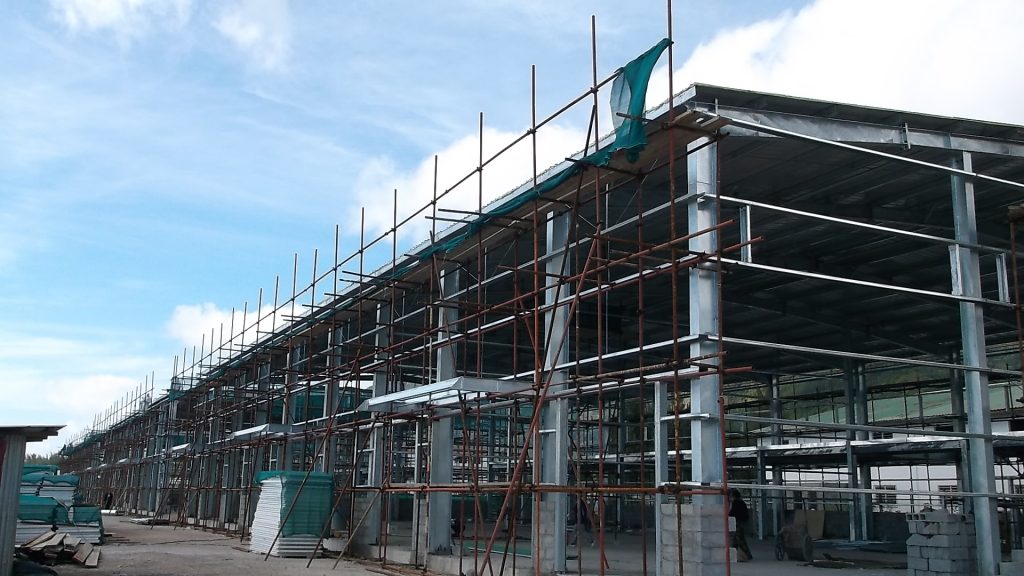Structural steel shapes come in a variety of standardized forms that are optimized for different structural applications. Choosing the right section type and understanding their properties aids engineers in structural design and material specification on construction projects.
Channels, or C-sections, are among the most versatile structural steel shapes. Their web and two integral flanges make them well-suited for use as beams, purlins, joists, girders and in some cases columns as well. Standard ASTM A36 steel channels are rolled in different depths ranging from 3-1⁄2 inches to 16 inches, with widths up to 12 inches depending on the depth. Channel flange dimensions and thickness proportionally increase as the section gets deeper. The C-shape performs well as simply supported or continuous beams for floors, roofs and bridge structures due its web and two flanges which allow it to efficiently withstand bending stresses as well as axial forces from tension or compression.
Angles are L-shaped sections commonly used for applications such as studs, bracing, pile caps, and other structural elements subjected primarily to axial forces rather than bending. They are commonly stocked in leg sizes designated by their nominal dimensions, such as a 3-inch by 2-inch angle. Standard steel angles range in leg dimensions from 1-1⁄2 inches up to 8 inches, with thickness varying based on the size. Angles are well-suited to functions like truss diagonal bracing, shear studs for composite steel-concrete slabs, and member connections.

Wide flange (WF) steel shapes, also called I-beams, are economical for use as primary beams, girders, columns and other structural elements where the required width exceeds the height. These sections have a distinctive I-shaped cross-section with a wide vertical web connecting horizontal top and bottom flanges. Standard ASTM A992 steel WF sections are produced in depths ranging from 4 inches up to 40 inches, with a maximum width of 16 inches depending on the specified depth. Larger depths and widths are available as heavy wide flange sections. The wide flanges efficiently carry both axial tension and compression loads encountered in columns, as well as bending stresses in beams and girders.
Hollow structural sections (HSS) refer to tubular steel sections used commonly for structural applications. These tubular members can be round, square, rectangular, or have other cross-sectional shapes. Nominal sizes are generally specified by the outer diameter or dimension of a square or rectangle, ranging from 0.5 inches on the smaller end, up to diameters exceeding 48 inches for the largest pipes and tubing. Wall thickness also varies significantly based on the size, ranging from less than 1/4 inch thick for small-diameter tubing, up to one inch or more for the thickest walled pipes. Typical uses include round HSS columns, square HSS bracing members, and rectangular HSS shapes for railing posts, sign posts, and pile casings.
Standard steel pipes are also often used as HSS structural members. Similar to hollow structural tubing, they are specified according to nominal diameter and wall thickness. These are selected from standard pipe sizes broken down by diameter into schedule 5, 10, 20, 30, 40 and 80, which refer to the wall thickness. Higher schedule numbers indicate thicker walls that are suitable for higher pressure applications as well as structural uses like tubular steel piles driven into the ground to support foundations and other loads.

In addition to these common standard section types, other steel shapes used in construction include tees, zees, plate girders and built-up box sections. Tees are used for intersecting elements subject to transverse loads, such as cross-bracing connections at beam-column joints. Zees or double angles serve as economical cantilevered floor beams. Plate girders are parallel flange I-beams utilized mainly for longer floor spans in bridges and buildings. And built-up box sections fabricated by welding plates are versatile for truss chords, arches, craneway girders and other specialized components.
Steel fabricators and detailers have extensive product data on the strengths and structural properties of standard steel sizes to rely on for analysis and design. This provides the basis for efficient selection of appropriately sized and shaped members to satisfy structural demands in construction projects utilizing steel.

Related news
-
Steps in Erecting a Steel Structure for a High Rise Building
2023-09-07 11:37:19
-
Considerations for Designing Long Span Steel Truss Systems
2023-09-07 11:51:55
-
Connecting Steel Beams and Columns in a Structural Frame
2023-09-07 11:41:02
contact us
- Tel: +86-532-88966982
- Whatsapp: +86-13793209022
- E-mail: sales@lidajituan.com


